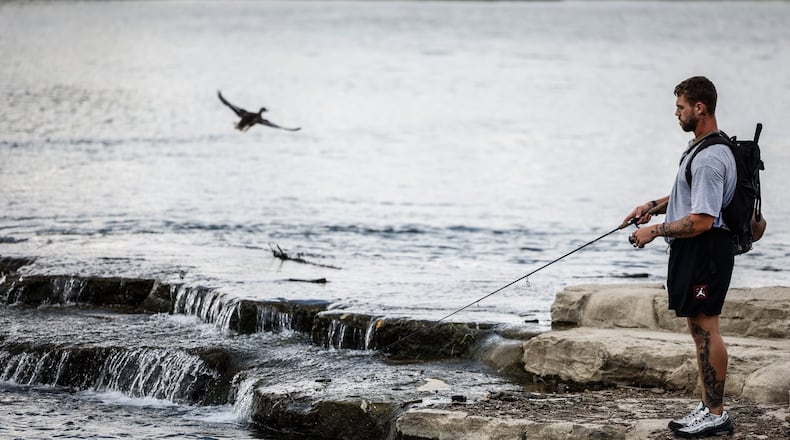The study released by the Ohio EPA was conducted in 2020 and 2021, measuring water quality of the 29 largest rivers in the state of Ohio (excluding the Ohio River itself). The four Dayton-area rivers studied were the Great Miami, the Stillwater, the Mad, and the southern part of the Little Miami from Waynesville on south.
Vogel explained that poor water quality in the 80s could be attributed to agricultural runoff from farms and hazardous waste from sewage treatment plants, which have since been significantly addressed with the Water Quality Act and technological advancements over the past few decades.
The study showed that the Great Miami, the Stillwater and the Mad rivers had “full attainment” of Clean Water Act status for their Dayton-area sections, based on biological surveys of the health of macro-invertebrates and fish. The Little Miami River had full attainment of Clean Water Act status in its Warren County portion.
A few specific scores stood out locally. On a measure called “biotic integrity” of fish (IBI), the Stillwater River easily had the highest score of all 29 Ohio rivers studied. The Dayton-area parts of the Great Miami and Little Miami also scored above average. Another measure called ICI (Invertebrate Community Index) showed the Mad River and the local parts of the Great Miami both well above the state average.
Mike Ekberg, the manager of water monitoring at the Miami Conservatory District explained that a river of “good water quality” serves the environment in multiple ways.
“A good quality river supports an abundant, diverse variety of wildlife,” Ekberg said. “Then we can also look at the river in terms of human uses. Does it provide drinking water, is it used for industrial manufacturing and things like that? If it is being used as a drinking water source, is it able to support those uses?”
Vogel explained that the study sampled water quality of a river at roughly 9-mile intervals, and quality varied from area to area.
“You’re looking at fish and bugs, the aquatic life — what’s living in there and how healthy are they?,” Vogel said. “We count them, we do biometric testing of them to see what is contaminating the fish and the bugs. Then we’re doing actual water chemistry, we’re testing for a host of things in the water itself — and then the sediment testing, the solids under the creek and what’s in the creek.”
Ekberg, who solely focuses on the Great Miami River, says that the success of water quality in our rivers can be attributed to the Water Quality Act, the people of Dayton, and increased awareness.
“There’s been a big change in public perception of our rivers and streams here,” he said. “Now people more and more want to go out and canoe or kayak on our rivers. We see a lot of communities that want to encourage riverfront activities and development, we see more bikeways and recreational paths among rivers. I think in general none of that would work really well if the river was grossly contaminated. Nobody wants to be out paddling or fishing in a river that’s nasty.”
Vogel said there is a lot to be proud of and to look forward to when analyzing the positive results of the survey.
“We’re excited about the history and the progress we made, but also what this gives us is a baseline for how to get better,” she said. “This gives us the data to be able to take the additional money that the General Assembly appropriated in this last budget to go and do more for the rivers even more for the next generation.”
About the Author


